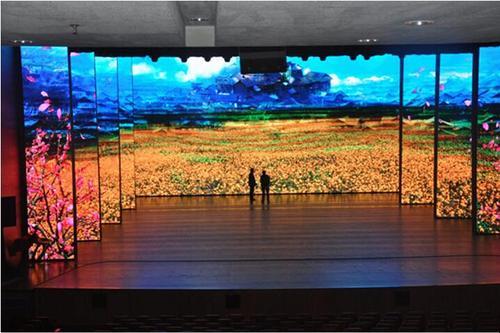Enhancing Visual Effect Via Tactical Content Scheduling in LED Display Execution
Wiki Article
Enhancing visual impact during LED screen shows demands meticulous preparation plus tactical visual timing. Light-emitting diode screens represent potent instruments in graphic narration, frequently used in concerts, gatherings, plus displays. The efficacy of these screens depends not only only on the quality of the visuals but additionally upon the manner plus timing they are shown. By comprehending the viewers' focus duration plus the rhythm of the occasion, event planners can craft a more captivating encounter that enthralls spectators plus improves the total show.
One crucial element of strategic content scheduling is timing. It is essential to align the visuals with the rhythm and pace of the performance. For instance, during a musical performance, visuals should complement the beat and mood of the melody. This alignment aids to forge a unified experience that draws the viewers closer. Additionally, it is crucial to consider the duration of each visual clip. Brief, striking segments can sustain viewer engagement, while longer visuals may be suitable for moments of reflection or emotional bonding. By altering the length and intensity of the visuals, event planners can maintain the viewers interested during the show.

Another important element is the material in question. The images displayed on the LED wall should be pertinent to the concept of the show. This relevance helps to strengthen the narrative being communicated and makes the experience more memorable for the viewers. For instance, if the performance is about environmental consciousness, using images that illustrate nature and wildlife can enhance the message. Furthermore, incorporating dynamic features, such as motion graphics or interactive graphics, can add excitement and keep the audience's focus. The appropriate material, shown at the appropriate moment, can significantly elevate the impact of the performance.
Audience engagement is also a key factor in visual timing. Comprehending the demographics and tastes of the audience can guide the selection of visuals. For example, a youthful crowd may react better to bright hues and quick motion graphics, while an mature crowd might value more nuanced and refined images. By customizing the material to the viewers' preferences, event planners can craft a more tailored encounter that connects with viewers. Additionally, incorporating audience participation, such as live polls or social interactions, can additionally enhance engagement and render the performance more engaging.
Finally, assessing the efficacy of the visual timing is crucial for upcoming shows. Collecting responses from the viewers can offer insightful information into what worked well plus what could be improved. This data can help organizers refine their strategies and make informed decisions for upcoming performances. By constantly evaluating and modifying the visual timing strategy, event planners can amplify the visual impact of LED wall performances and visit the website create memorable encounters for their viewers.